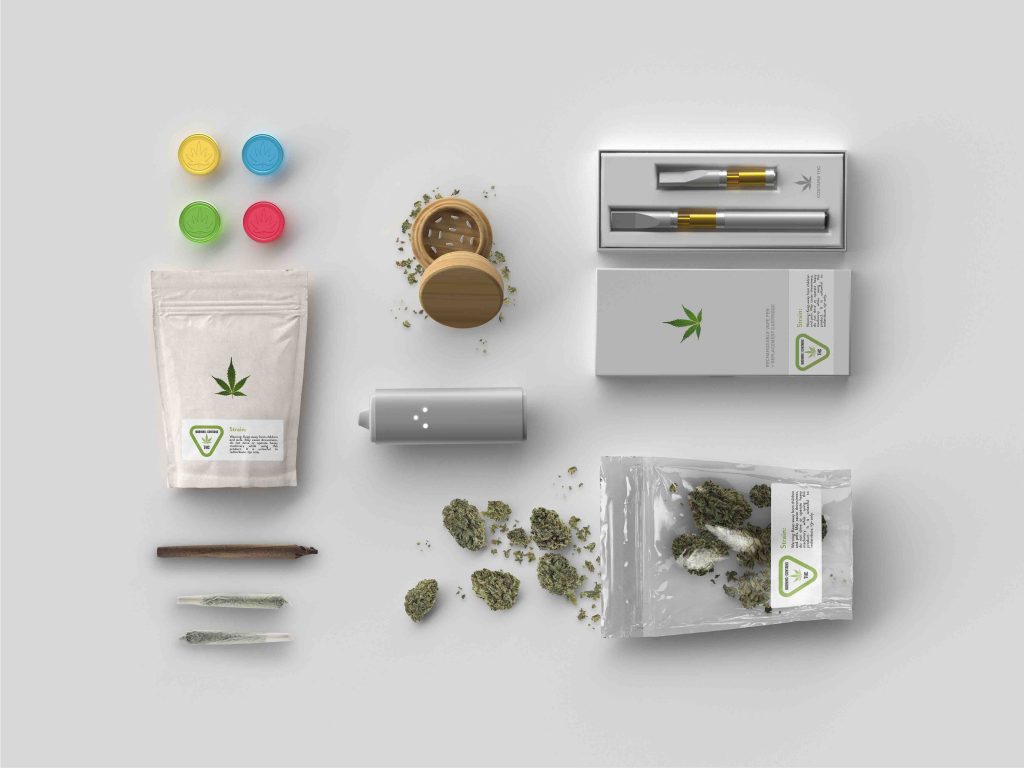
Features
Production
Greener ways to package cannabis
September 21, 2020 By Binny Paul, Campbell River Mirror (Local Journalism Initiative)
 Photo: Elton Clemente, Adobe Stock
Photo: Elton Clemente, Adobe Stock When Canada legalized cannabis in 2018, there was so much of thought that went into production and logistics that packaging became an afterthought. Until it wasn’t.
Excessive, bulky packaging and plastic containers soon became the most uncool elements that both licensed producers and consumers had to deal with.
As per federal cannabis regulations, there are several mandates that licensed producers have to accommodate while packaging and selling cannabis products for the masses.
Apart from being child-resistant, the packaging of the containers had to be designed to show any signs of tampering. The immediate containers must also prevent contamination, ensure that the product is kept dry, must be opaque or translucent and must not exclude maximum amount (30 gram) of dried cannabis.
Similarly, labelling requirements must include mandatory warnings and product information, including THC and CBD levels.
The main reason for these mandates cited by Health Canada was to “minimize harms of use.” The problem of plastic pollution has not gone unnoticed by the federal government.
To help reduce the amount of waste created by cannabis product packaging, the regulations permit wrappers and peel back-type labels as well as flexibility for packaging materials other than plastics (e.g., cardboard).
In an email statement, Health Canada spokesperson Tammy Jarbeau said, “Health Canada encourages the use of innovative and environmentally sound packaging approaches, provided the requirements in the regulations are satisfied.”
In the last two quarters, ND Supplies – a Richmond, B.C., based manufacturer and supplier of packaging materials – has noticed a shift where more producers have begun opting for environmentally-friendly options.
Kevin Lee, vice president of ND Supplies said that as manufacturers they have identified two best sustainable options for packaging containers – glass and tin.
“Many producers are gravitating towards the idea of using glass containers instead of plastic,” said Lee.
The use of other materials such as recycled plastic and paper for packaging still has limitations. Due to the possibility of contaminants in recycled plastic, manufacturers are limited to use only new materials for plastic containers. And although paper products such as cardboard boxes are being used, it is not the best option as paper absorbs moisture and can affect the moisture levels of cannabis.
“Glass on the other hand is something that people are familiar with recycling,” which makes it a better option for sustainable packaging.
But at the same time, using glass in packaging can also be expensive compared to plastic.
Depending upon the thickness of the container, a plastic container costs around 40-60 cents which is cheaper than glass which costs between 60 cents to two dollar. Plastic is cheaper and can be recycled.
In terms of their budget, any licensed producer who can afford glass containers would want to go for it. Whereas that would not necessarily be an option that smaller producers will opt for, he said.
“The more sustainable options currently compliant and available for use in the Canadian market are generally more costly than more typical packaging formats,” said Hillary Lieberman, executive director of Cannasupplies, a cannabis packaging supplier.
Lieberman said that where possible, their goal is to produce and source products made of “sustainably conscious materials.”
But developing and producing packaging in compliant formats – in both material input and product functionality – that will comply with the current Canadian cannabis packaging requirements is one of the biggest challenge, said Lieberman.
“There has to be a way for producers to accommodate environment-friendly options and balance the cost of production too,” said Lee.
According to Lee, most licensed cannabis producers and consumers in Canada would like to opt for sustainable options since the cannabis is still a “grassroot industry” in the country.
Initiatives to ‘go green’ has slowly begun gaining momentum.
Earlier this year in January, an Ontario based supplier, Tweed, partnered with a U.S. recycling business Terracyle to recycle all cannabis packaging purchased from licensed retailers in Canada.
The initiative was a hit among customers who welcomed the chance to dispose the multiple layers of plastic packaging in a sustainable manner.
But coming back to sustainable or environment-friendly packaging options, there aren’t many.
“We’re not just there yet,” said Lee and added that ND supplies is investing in research and development to chalk out new options.
This is mostly because when legalization was rolled into place back in 2018, packaging was not thought through, he said.
“With all the guidelines, it’s really hard to fit all of that into affordable and environment-friendly packaging,” said Lee.
Within B.C. the infrastructure for recycling is limiting too, said Lee and added that the most important tool for cannabis consumers to reduce carbon footprint at the moment is awareness and education.
“People need to practice moving the packaging materials towards recycling rather than it ending up in the landfills,” said Lee.
Print this page